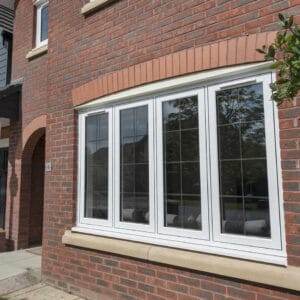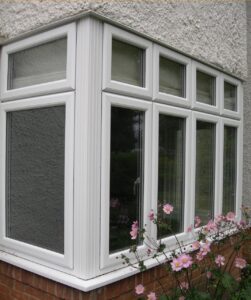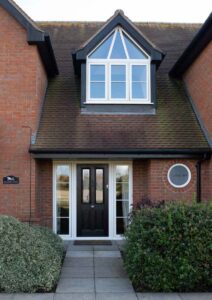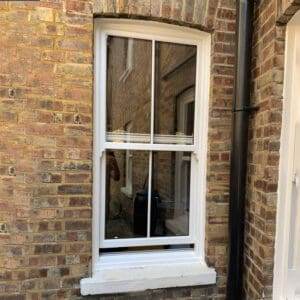Agaricus, a common type of mould, can be a serious concern for homeowners with wooden windows and frames, causing not only an unsightly appearance but also potential health risks. Mold and mildew on wooden windows and frames can compromise the structural integrity of the wood, leading to costly repairs. In addition, the spores released by mould can trigger allergies and respiratory problems, posing significant health hazards to occupants. In this informative blog post, we will discuss the various methods and products available for combating and preventing mold and mildew on wooden windows and frames, as well as how to effectively remove existing mold from wood. For detailed instructions on removing mold from wood, check out How to Remove Mold From Wood.
Key Takeaways:
- Regular Maintenance: Regularly inspect and clean wooden windows and frames to prevent the build-up of mould and mildew.
- Proper Ventilation: Ensure adequate ventilation in the room to prevent condensation, which can lead to mould growth on wooden surfaces.
- Use of Anti-Fungal Treatments: Apply anti-fungal treatments or sealants to protect wooden windows and frames from mould and mildew.
- Immediate Repairs: Promptly repair any cracks or damage to the wooden windows and frames to prevent moisture from seeping in and causing mould growth.
- Regular Inspections: Schedule regular inspections by professionals to assess the condition of wooden windows and frames and address any potential mould or mildew issues.
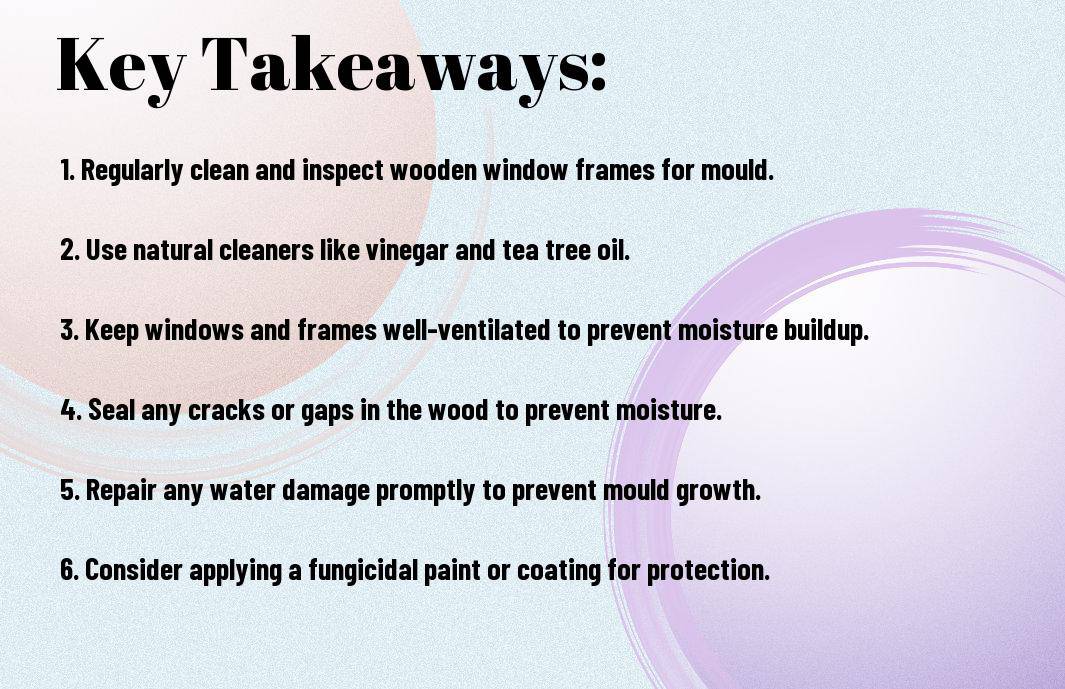
Understanding Mold and Mildew
Mold and mildew are common problems that affect wooden windows and frames, causing damage and potential health risks. It’s important to understand the causes of mold and mildew, as well as the potential health implications, in order to combat these issues effectively.
For more information on preventing mold on wooden windows, check out Mold Prevention for Wood Windows – Window World.
What Causes Mold and Mildew on Wood
Mold and mildew thrive in damp and humid environments, making wooden windows and frames susceptible to these issues. Poor ventilation, condensation, and water leaks can all contribute to the growth of mold and mildew on wood.
Furthermore, organic matter such as dust, dirt, and pollen can provide the perfect breeding ground for mold spores, leading to the development of mold and mildew.
Health Implications of Mold in the Home
Mold can have serious health implications for those living in a home with mold-infested wooden windows and frames. Exposure to mold spores can trigger allergic reactions, respiratory issues, and even contribute to the development of asthma in some individuals.
It’s crucial to address mold and mildew problems promptly to prevent negative health effects associated with exposure to these harmful substances.
Recognising the signs of mold and mildew growth on wooden windows is essential for maintaining a healthy indoor environment. Immediate action should be taken to address any issues and prevent further damage.
Prevention Strategies
Preventing the growth of mold and mildew on wooden windows and frames is crucial to maintaining the structural integrity and aesthetic appeal of your home. Implementing effective prevention strategies can protect your investment and ensure a healthy indoor environment for you and your family.
Proper Installation and Maintenance
Proper installation and regular maintenance of wooden windows and frames are essential in preventing the infiltration of moisture, which can lead to the growth of mold and mildew. Ensure that windows are installed correctly to minimise gaps and cracks that may allow water to seep in. Regularly inspect and repair any damaged or deteriorating areas to prevent moisture ingress.
Optimal Humidity and Ventilation Techniques
Optimising humidity levels and implementing effective ventilation techniques are key in preventing the onset of mold and mildew. Keep indoor humidity levels between 30-50% and utilise dehumidifiers or air conditioners in humid climates. Implementing proper ventilation, such as opening windows and using exhaust fans in high-moisture areas like the kitchen and bathroom, can help reduce humidity levels and inhibit mold growth.
By controlling humidity levels and promoting adequate ventilation, you can significantly reduce the risk of mold and mildew formation on your wooden windows and frames. These simple yet effective strategies can safeguard the health and longevity of your home’s wooden fixtures.
Treatment Methods
Identifying the Extent of Mold Growth
Before implementing any treatment, it is essential to accurately assess the scope of the mold growth on the wooden windows and frames. This can be achieved by conducting a thorough inspection of the affected areas, looking out for visible signs such as discolouration, musty odours, and water damage. It is also important to check for any hidden mold by carefully examining areas that are not immediately visible, such as the window sills and behind the frames.
Once the extent of the mold growth is determined, it is crucial to take prompt action to prevent further spread and damage. This may involve isolating the affected areas and removing any compromised materials. It is important to address the issue with urgency to minimise the potential health risks and structural damage associated with prolonged mold exposure.
Cleaning Techniques and Solutions
When it comes to cleaning mold and mildew from wooden windows and frames, it is vital to use the right techniques and solutions to ensure effective removal without causing harm to the wood. Utilising mild detergent and water, along with a scrub brush or sponge, can help to physically remove mold from the surface. Additionally, vinegar or hydrogen peroxide solutions can be effective natural alternatives for treating mold on wood.
It is crucial to avoid using harsh chemicals or abrasive cleaning methods, as these can potentially damage the wood and exacerbate the problem. It is also important to address any underlying moisture issues to prevent the regrowth of mold. Implementing proper ventilation and addressing any leaks or condensation can aid in preventing future mold problems.
For further information on effective cleaning techniques and solutions, refer to the section on “Cleaning Techniques and Solutions” in this post.
Professional Remediation Options
If the mold infestation on wooden windows and frames is extensive or persistent, it may be necessary to seek professional remediation options. Professional remediation services can provide comprehensive solutions for eliminating mold and preventing its recurrence. They have the expertise, equipment, and resources to address the issue effectively, ensuring the safety of the occupants and the integrity of the wooden structures.
Professional remediation options may involve thorough cleaning, application of specialised solutions, and implementation of advanced techniques such as heat treatments or fumigation. In some cases, it may also be necessary to repair or replace the affected wooden components to eradicate the mold completely.
Consult a qualified remediation specialist for personalised advice and effective remediation strategies tailored to the specific needs of your wooden windows and frames.
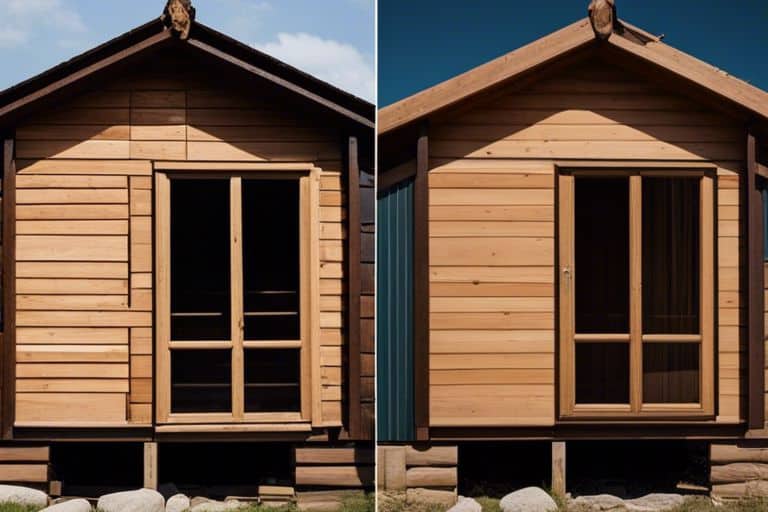
Long-Term Protection and Care
When it comes to combating mold and mildew on wooden windows and frames, long-term protection and care are essential. By implementing regular inspection and maintenance schedules, as well as using sealants and protective finishes, you can effectively prevent and combat the growth of mold and mildew, ensuring the longevity of your wooden windows and frames.
Regular Inspection and Maintenance Schedules
Implementing regular inspection and maintenance schedules is crucial in combating mold and mildew on wooden windows and frames. Regular inspections allow you to detect any signs of moisture or damage early on, enabling you to take preventive measures before the issue escalates. Additionally, establishing a maintenance schedule for cleaning, repairing, and repainting will help maintain the structural integrity of the wooden windows and frames, reducing the risk of mold and mildew growth.
Sealants and Protective Finishes
Using sealants and protective finishes is a key component in protecting wooden windows and frames from mold and mildew. Applying a high-quality sealant helps create a protective barrier against moisture, preventing water penetration and ultimately inhibiting the growth of mold and mildew. Furthermore, applying protective finishes such as paint or stain not only enhances the aesthetic appeal of the wooden windows and frames but also provides an additional layer of protection against the elements.
It is important to choose sealants and protective finishes that are specifically designed for exterior wooden surfaces and offer long-lasting protection against moisture and fungal growth. Additionally, be sure to follow the manufacturer’s guidelines for application and reapplication to ensure maximum effectiveness.
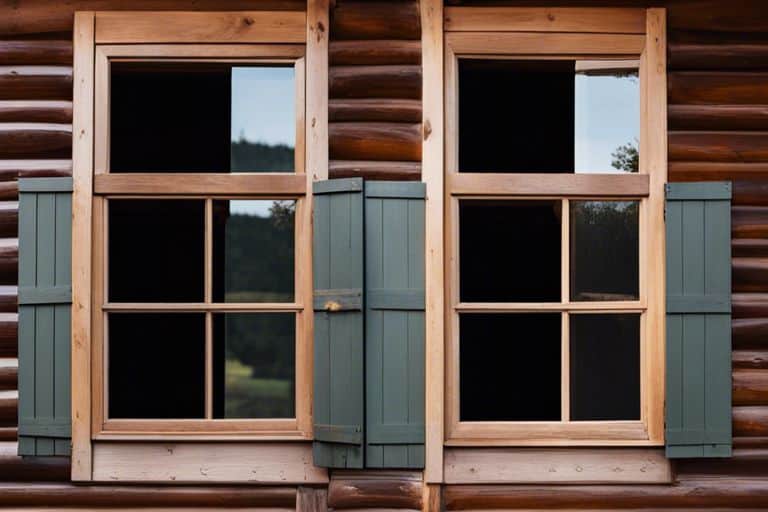
Combating Mold and Mildew on Wooden Windows and Frames
In conclusion, it is imperative to regularly inspect and maintain wooden windows and frames to prevent the growth of mold and mildew. By implementing a routine cleaning schedule and addressing any existing moisture issues, homeowners can effectively combat the spread of these harmful fungi. Additionally, using appropriate cleaning solutions and applying protective sealants can further safeguard wooden windows and frames against the detrimental effects of mold and mildew. It is essential to address these issues promptly, as prolonged exposure to mold and mildew can not only compromise the structural integrity of wooden windows and frames but also pose serious health risks. By taking proactive measures to combat mold and mildew, homeowners can ensure the longevity and safety of their wooden windows and frames.
FAQ
Q: What are the common causes of mold and mildew on wooden windows and frames?
A: The common causes of mold and mildew on wooden windows and frames include high humidity, poor ventilation, and water leaks. These conditions create a favourable environment for mould and mildew to grow.
Q: How can I prevent mold and mildew on wooden windows and frames?
A: To prevent mold and mildew, it is important to regularly inspect and maintain the windows and frames, ensuring proper ventilation and addressing any water leaks promptly. Using moisture-resistant paint or sealant can also help prevent mould and mildew growth.
Q: What are the risks of mold and mildew on wooden windows and frames?
A: Mold and mildew can not only cause damage to the wooden windows and frames, but they can also lead to health issues such as allergies, asthma, and respiratory problems. It is important to address mould and mildew promptly to avoid these risks.
Q: How can I remove mold and mildew from wooden windows and frames?
A: To remove mold and mildew from wooden windows and frames, use a mixture of water and mild detergent to scrub the affected areas. Alternatively, a solution of vinegar or hydrogen peroxide can also be effective. Make sure to wear protective gear and ventilate the area while cleaning.
Q: Are there any natural remedies for combating mold and mildew on wooden windows and frames?
A: Yes, natural remedies such as tea tree oil, grapefruit seed extract, or essential oils like lavender and eucalyptus can help combat mold and mildew. These natural options can be used as a spray or added to cleaning solutions to effectively tackle the problem.

